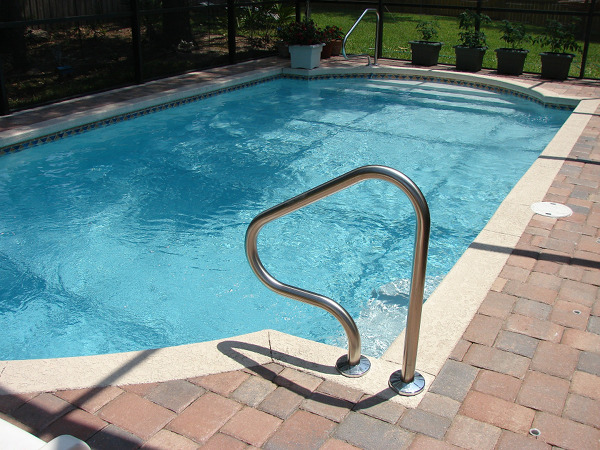
Reviewed by Andrada Simion, Master of Science in Chemistry
When you shock your pool, you add large amounts of chemicals in order to clean the water, and as with any time you measure a substance, there’s a possibility that you might get your measurements off. However, while it is technically not possible to “over shock” the water, there are some repercussions of adding too many chemicals and prevention methods that you will want to be aware of before it is time to swim again.
- If you find you have added too many chemicals, wait the full amount of time that is recommended on the packaging (generally 24 hours if you are shocking with chlorine) and then test the levels of chlorine; if chlorine levels are still too high at this time, continue to test the water at hourly intervals until the chlorine level is below 5 ppm and stabilizes.
- While measuring chlorine levels is the best way to see if everything is balanced, you should not measure levels on the same day that you shock – this can cause the test strip to bleach, leading to misleading information on what might be potentially dangerous levels of chemicals.
- Generally pools that have been over-shocked will return to a normal level after 48 hours – if your water is still at too high of a chlorine level after this time, continue to wait until levels have reached the recommended range before entering the water.
- If you do add too many chemicals, you can attempt to speed up the normalization process by removing the pool cover if it is on and exposing the water to additional sunlight as the UV rays will oxidize the chlorine compounds and release the free chlorine into the air.
- To combat over-chlorination, you can also temporarily turn off any other chlorination methods, like feeders or floaters, to remove the possibility of additional saturation.
- Although it is not technically possible to “over-shock” your pool, you can still cause damage to the vinyl or liner that may potentially lead to bleaching or leakage; dissolving the chemicals beforehand in a bucket of water will allow you to avoid directly shocking the water and will help protect your pool liner.
- Always keep your personal safety in mind when you are using chemicals at any levels – if you fail to wear protective eyewear and gloves when using large amounts of chlorine or other substances, you might encounter harmful irritation of the eyes and/or skin.
- If you feel like your pool still isn’t fully clean even after using the recommended amount of chemicals, resist the temptation to add more and instead consider scrubbing the hard-to-reach areas (such as corners, crevices, and stairs) with a brush to enhance the cleanliness.
- No matter what levels of substances you are adding, never add it through your pool skimmer; pouring the shock directly into the skimmer will cause the chemicals to interact in a very small space and could lead to the creation of a toxic gas and possibly an explosion.
- If you have shocked your pool and find that the water is still cloudy even after chlorination levels have returned to normal, you can clear up your water by turning on your pump and filter, and allowing them to run continuously for 4-6 hours.
Tips for using the right amount of shock:
- The dirtiness of your pool will determine how many times you need to shock the water and with what levels of chemicals; check the information on the chemicals you are using to ensure that you are applying the correct dose.
- If the dosage for shocking isn’t listed on the substance that you are using, you can follow this general guideline: you should dissolve one pound of your chlorine substance for every 10,000 gallons of water in your pool (to calculate the gallons in your pool, multiply the length of your pool in feet x width in feet x depth in feet x 7.5).